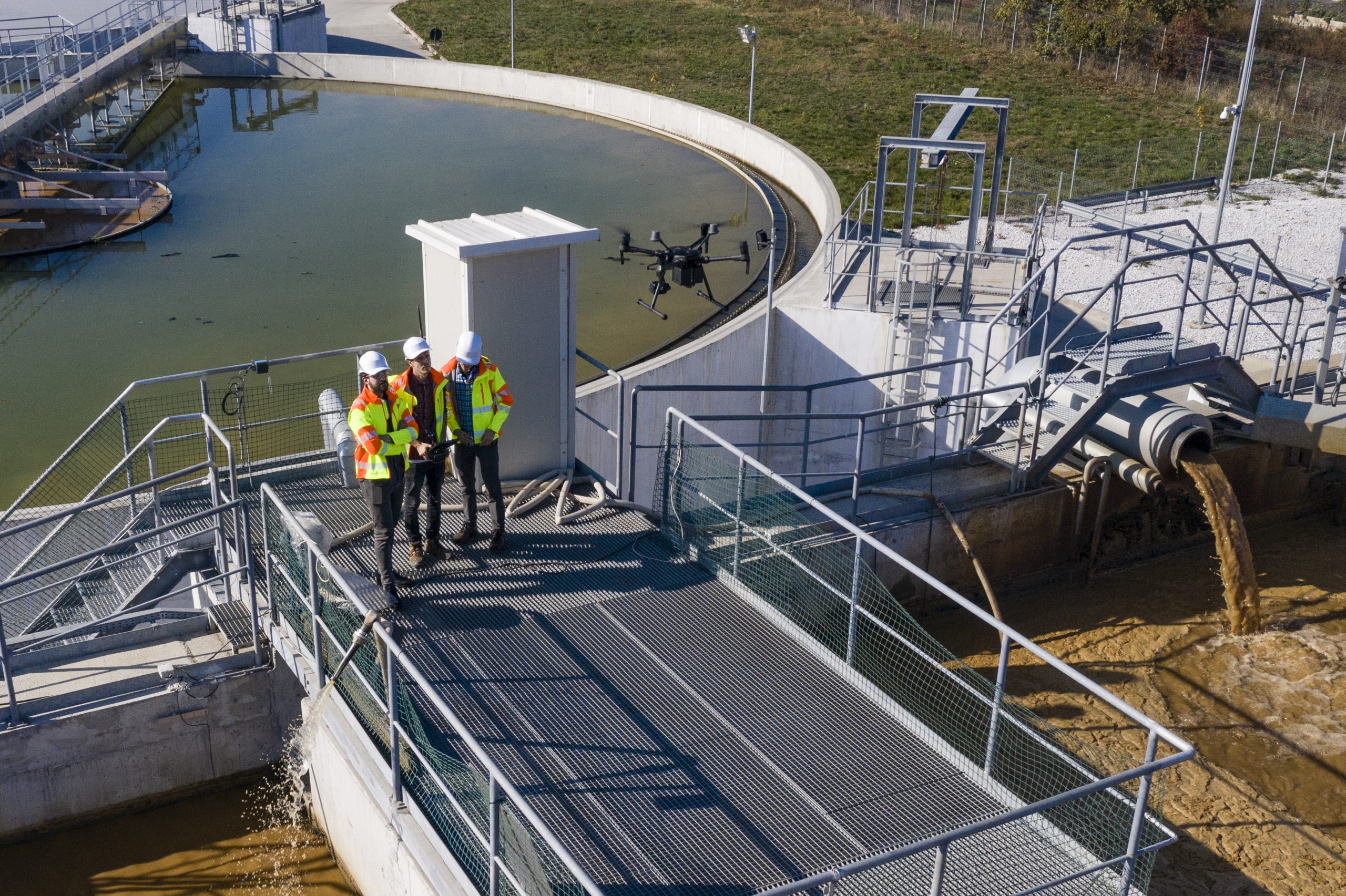Trusted Professionals Offering Top-Notch Wastewater Solutions
Trusted Professionals Offering Top-Notch Wastewater Solutions
Blog Article
Recognizing Wastewater Therapy Processes and Their Environmental Impact
The ins and outs of wastewater treatment procedures play a crucial duty in mitigating environmental difficulties linked with water contamination. Each phase, from preliminary to innovative treatments, is made to address particular pollutants, inevitably guarding both public health and wellness and marine ecological communities.
Introduction of Wastewater Treatment
Just how is wastewater changed into a safe resource for the setting? Wastewater therapy is a critical process made to get rid of contaminants from made use of water, consequently protecting public health and wellness and protecting communities. This procedure starts with the collection of wastewater from domestic, industrial, and business sources, which is then routed to treatment facilities.
At these centers, different physical, chemical, and organic approaches are used to deal with the wastewater. Subsequently, biological therapies, such as turned on sludge procedures, use microbes to break down organic matter.
The dealt with effluent can be safely released into all-natural water bodies or recycled for irrigation and industrial purposes, promoting resource conservation. Furthermore, the treatment process creates biosolids, which can be repurposed as plant foods or soil amendments, even more boosting sustainability.
Stages of Therapy Processes
The wastewater treatment procedure normally consists of three main stages: initial, primary, and additional therapy. Each phase serves a distinctive duty in decreasing the pollutant load and ensuring the effluent satisfies ecological criteria before discharge.

The key therapy stage concentrates on the physical separation of put on hold solids from the wastewater. Through sedimentation, heavier bits clear up at the end of sedimentation containers, forming sludge, while lighter materials, such as oils and oils, float to the surface area and are skimmed. This process considerably minimizes the organic and inorganic load in the wastewater.
Second treatment is a biological procedure aimed at additional reducing the focus of organic issue. This phase is crucial for attaining the necessary biochemical oxygen need (BOD) decrease, inevitably leading to cleaner effluent all set for discharge or more therapy.

Advanced Treatment Technologies
Complying with the additional therapy processes, advanced therapy technologies play an essential function in further enhancing the high quality of dealt with wastewater. These innovations are designed to get rid of residual contaminants that are not effectively eliminated during main and additional treatments, making sure the effluent satisfies stringent regulatory standards.
Among the widely used innovative therapy approaches are membrane layer filtering, reverse osmosis, and advanced oxidation processes. Membrane layer purification, consisting of microfiltration and ultrafiltration, works in dividing fine fragments, pathogens, and colloids from the water (Wastewater). Reverse osmosis makes use of semi-permeable membranes to remove liquified solids, leading to top quality water ideal for numerous applications
Advanced oxidation procedures (AOPs) employ strong oxidants to weaken natural pollutants, including drugs and individual care products that are immune to standard therapy. These approaches enhance the biodegradability of complicated substances, facilitating their removal.
One more significant innovation is making use of biological nutrient elimination procedures, which particularly target nitrogen and phosphorus, protecting against eutrophication in obtaining water bodies. In general, advanced therapy modern technologies are essential for accomplishing greater degrees of purification, advertising water reuse, and safeguarding public health while dealing with the obstacles linked with wastewater administration.
Environmental Benefits of Therapy
Various ecological benefits occur from efficient useful link wastewater treatment procedures that add to ecosystem health and sustainability. Mainly, these processes dramatically minimize the launch of dangerous toxins right into natural water bodies, which aids preserve marine communities. By getting visit site rid of impurities such as hefty metals, nutrients, and microorganisms, treated wastewater minimizes the threat of waterborne conditions and promotes biodiversity in aquatic settings.
In addition, wastewater therapy centers often use innovative modern technologies that enable water recycling and reuse. This practice not just preserves fresh water resources yet also minimizes the need on natural water products. Improved nutrient removal from wastewater can likewise prevent eutrophication, a process that leads to algal blossoms and succeeding oxygen exhaustion in marine systems.
Additionally, effective therapy processes can decrease greenhouse gas emissions, specifically methane and nitrous oxide, which are frequently released during untreated wastewater decomposition. By recording and making use of biogas from anaerobic digesters, centers can convert waste right into eco-friendly power, thus adding to a reduction in fossil gas reliance.
Difficulties and Future Patterns
While the ecological benefits of wastewater therapy are clear, a number of obstacles linger that prevent optimal results in this area. One significant problem is aging infrastructure, which typically leads to inefficiencies and boosted functional costs - Wastewater. Many therapy plants were developed years back, and their capacities do not align with modern-day needs, that include stricter regulative standards and greater quantities of wastewater because of urbanization

Looking ahead, there is a growing focus on resource healing and round economy principles within wastewater treatment. Advancements such as anaerobic food digestion, which can produce biogas, and advanced purification modern technologies are gaining traction. These techniques not just improve treatment efficiency however additionally advertise sustainability.
Inevitably, addressing these difficulties calls for cooperation amongst stakeholders, financial investment in innovation, and a commitment to recurring research. By embracing these patterns, the wastewater treatment field can evolve to satisfy the needs of an altering environment and society.
Verdict
In verdict, wastewater treatment processes play an essential role in enhancing ecological quality and public wellness. The multi-stage therapy structure, paired with sophisticated modern technologies, effectively alleviates contamination and promotes lasting water administration. By attending to residual contaminants and reducing nutrition runoff, these processes add to the conservation of water environments and the decrease of greenhouse gas exhausts. Continued innovations and adaptations in therapy methods will be crucial for overcoming arising obstacles and guaranteeing the sustainability of natural deposits (Wastewater).
Report this page